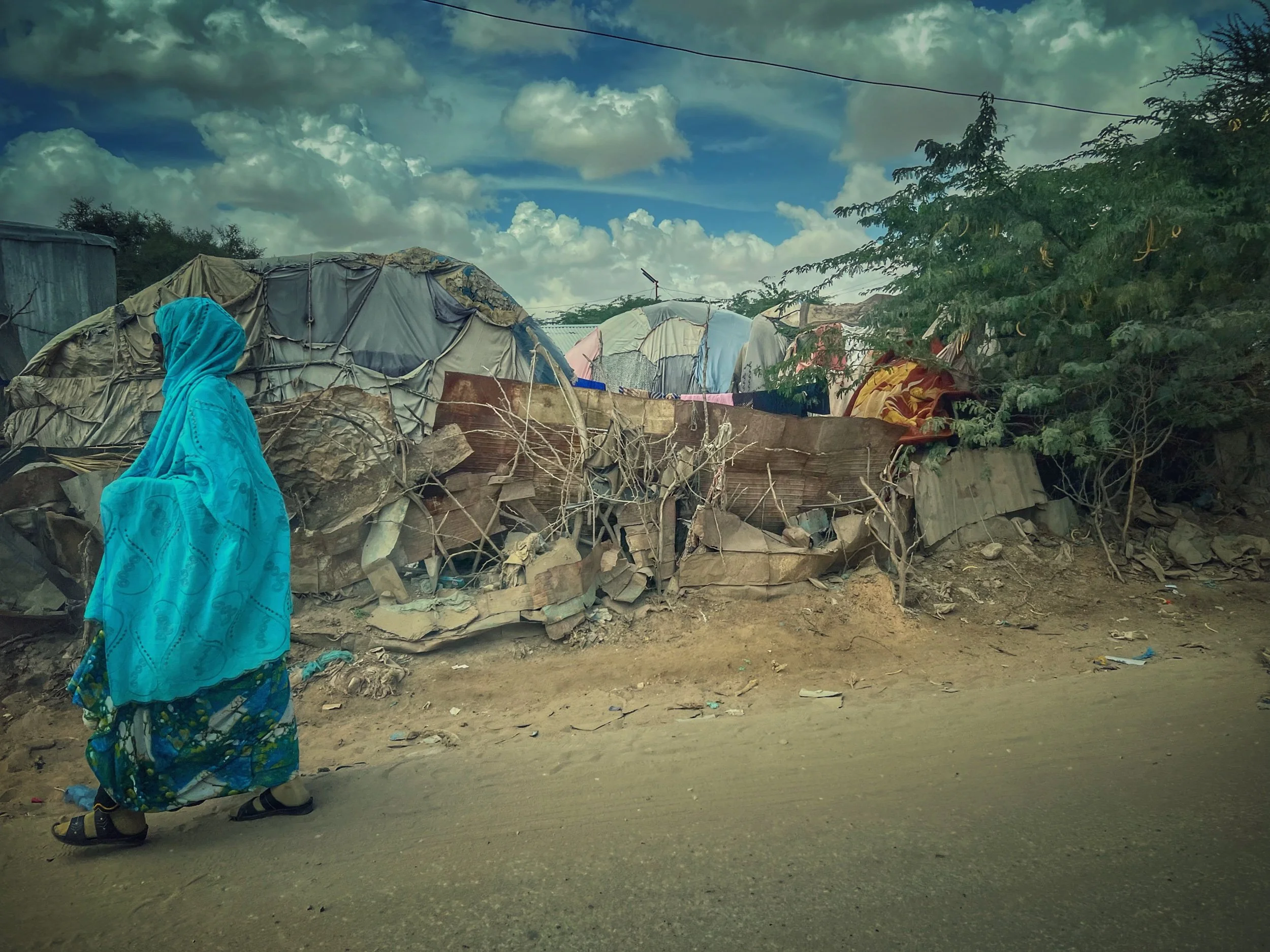Submission to the UN Special Rapporteur on the Promotion and Protection of Human Rights in the Context of Climate Change
“Addressing the human rights implications of climate change displacement including legal protection of people displaced across international borders”
This submission is based on Climate Refugees’ October 2022 in-country research in Kenya and Somalia on climate-induced displacement, migration and human rights losses, and interviews with 110 impacted and displaced persons. Two country reports are forthcoming in early 2023.
This document focuses on the specific questions posed by the UN Special Rapporteur Ian Fry in the call for inputs, paying particular attention to sharing the stories, experiences and hardships displaced communities told Climate Refugees that highlight the precarity and lack of protections populations currently face.
With climate change comes cultural and economic loss. So too with displacement. Flooding and expanding waters have meant permanent displacement, no crops, no fishing and dependency on food aid for those who can get access to it. Not only are homes submerged, so too are the graves of loved ones. Historical livelihoods of fishing, farming and pastoralism are being forcibly abandoned due to the forces of climate change.
The Horn of Africa is experiencing an unprecedented drought, the worst to strike the region in 40 years. The present two-year drought has now exceeded the severity and duration of the 2016–2017 and 2011–2012 droughts. Nearly 40 million people are affected by dire food insecurity and near famine. Nine million livestock have died, destroying the livelihoods of the primary pastoralist communities and further contributing to malnutrition in 5 million children.
The number of peoples forced to migrate in Kenya could be as high as 286,000, with over 8 million Kenyans affected by the drought in some way.
Over one million people in Somalia alone have now been displaced both internally and across borders to Yemen, Ethiopia, Kenya and beyond. A further 810,000 people are displaced in the semi-autonomous region of Somaliland.
Climate change impacts are disproportionately impacting developing countries who are increasingly overwhelmed in their capacities to respond to the needs of displaced persons.
With 100 million now forcibly displaced globally, and in some years climate change driving internal displacement more than three times as much as conflict or violence, climate displacement is a prime example of loss and damage.
Policies and practices to better protect climate displaced persons, migrants and refugees must be formally adopted at the UN climate talks. Up to now, not only has climate displacement been a peripheral issue, but displaced persons have been shut out even from representation. While this should be a formal agenda topic on its own, in the short-term, one of the strongest ways in which this can be incorporated into the UN climate agenda is through the loss and damage agenda, formally adopted at COP27.
Climate Refugees encourages the UN Special Rapporteur to pushback on the security framing of climate change that prioritizes border security over human security, urging protection policies be pursued via the loss and damage agenda, where high emitting countries are not only reticent to support a loss and damage funding facility, they are also spending 30 times more on their militaries than on climate finance for the world’s most vulnerable countries.
Climate change knows no state borders. While more people are internally displaced due to climate change than across borders, their humanitarian needs and protection concerns remain largely similar. The IPCC Sixth Assessment Report warned of the extreme vulnerability of refugees and IDPs to climate change, pushing them into cycles of multidimensional poverty deemed “climate traps.”
The global South, among the most vulnerable in the world to climate change and its compounding and intersecting impacts, hosts over 83% of the world's forcibly displaced. UNHCR tells us that that 90% of refugees and 70% of internally displaced persons come from countries on the “frontlines of the climate emergency.” Despite this, reservations abound whether granting refugee status to climate displaced persons would weaken the 1951 Refugee Convention, while excluding others who do not meet sufficient criteria.
UNHCR has provided guidance in its October 2020 legal considerations paper on how existing international refugee law, the 1951 Refugee Convention as well as regional agreements could be applicable for claims of international protection in the context of climate displacement. State parties to the Convention can strengthen their national legal frameworks without having to revisit the Convention definition. However, refugee and migrant protections are under attack in many countries, with externalization of borders, pushbacks of those seeking protection and asylum, and even non-refoulement an increasingly common occurrence.
Climate Refugees encourages the Special Rapporteur explore ‘social group’ as a category of climate displaced persons. A ‘particular social group’ normally comprises persons of similar background or social status, and refugee claims under this category frequently overlap with claims of persecution on other convention grounds like race, religion or nationality. We recommend the Special Rapporteur explore options for ensuring protection of persons who share distinct characteristics that comprise a similar group, and who face undue harm or persecution because of their social group as a possible framework for protection.
Read more on these and further recommendations in our submission to the Special Rapporteur below.

